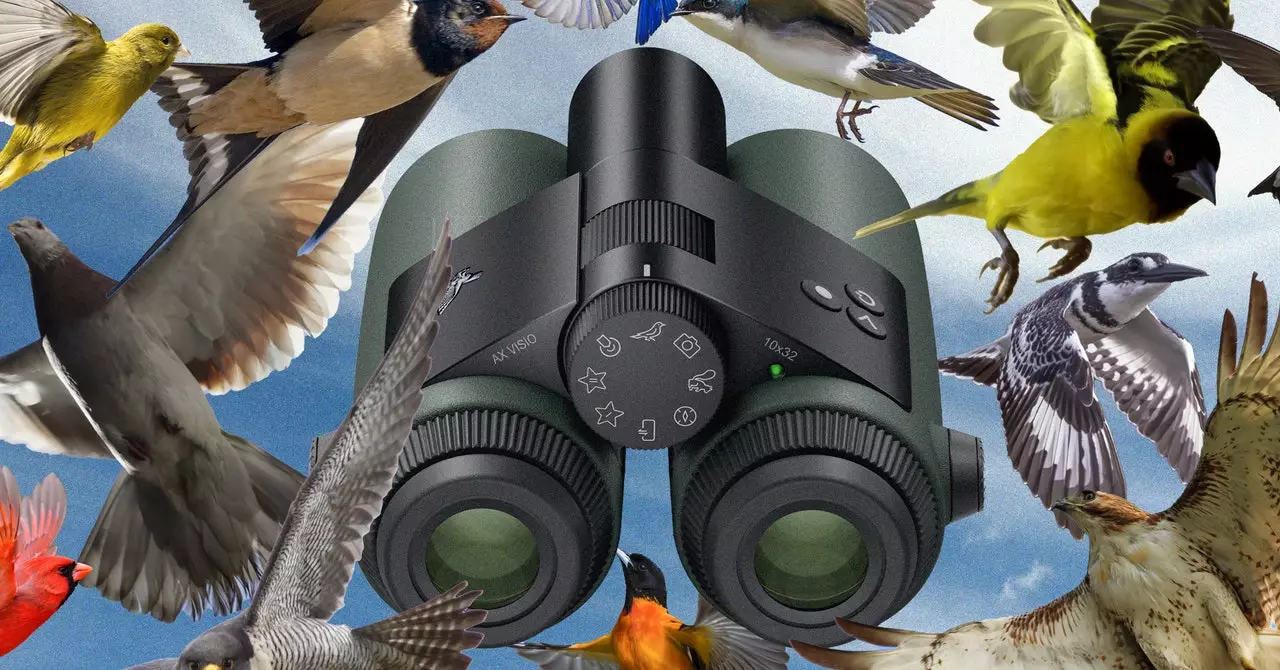In recent years, technology has revolutionized various outdoor activities, and birdwatching is no exception. The AX Visio binoculars represent a leap forward, incorporating advanced identification features that numerous wildlife enthusiasts find appealing. Leveraging sophisticated databases and geolocation technology, these binoculars promise to enhance the experience of birdwatchers, both novice and expert. This article provides a comprehensive analysis of the strengths and drawbacks of the AX Visio, particularly in the context of its bird identification capabilities.
At the core of the AX Visio’s appeal is its identification functionality, which utilizes avian information from the renowned Cornell Lab of Ornithology’s Merlin Bird ID database. However, it does not stop there. The binoculars also encompass settings for identifying mammals, butterflies, and dragonflies—powered by the Sunbird database. While this comprehensive range of features is impressive, it’s crucial to note that the identification of mammals and flying insects is currently limited to North America and Europe. On the other hand, the bird identification functionality is a global offering, even extending to remote locales like Antarctica.
The binoculars combine image recognition with geolocation technology, facilitated by a built-in GPS sensor. This feature allows the device to customize its recommendations based on the user’s location, thus enhancing the accuracy of the identification process. However, despite the technology’s promise, some may find the interface initially overwhelming. As an amateur birdwatcher who tested these binoculars, I had my reservations about the user-friendliness and complexity of the functionalities.
During my testing at the andBeyond Phinda Private Game Reserve in South Africa—a breathtaking backdrop for birdwatching—I was given the opportunity to explore the AX Visio’s many features. Upon receiving the binoculars from Swarovski, the first hurdle was mastering the various modes of use. The mode-selection wheel located on the bridge is user-friendly, allowing quick transitions between settings. This ease of use is critical for maintaining the immersive experience of observing wildlife.
Additionally, I found that the identification mechanics rely on visual focalization. When observing a bird, a red circle appears within the field of view, indicating where the software is attempting to seek identification. For those unfamiliar with wildlife identification, this immediate feedback can help streamline the experience. Yet, succeeds or fails based on dynamic factors such as distance and clarity. A bird must fill a substantial portion of the red circle for successful identification, which can sometimes be a frustrating endeavor.
During my field testing, the AX Visio binoculars exhibited impressive performance capabilities. The device accurately identified a small malachite kingfisher perched above the water, clearly demonstrating the utility of the technology. However, this capability does not always guarantee success. When observing a bee-eater positioned 100 meters away, identification errors occurred despite the bird being distinctly visible.
Frustration arose when the technology failed to recognize birds that were evidently within the red circle. An error message suggesting “no bird to identify” appeared on numerous occasions, undermining the overall experience. As birdwatchers know, patience and persistence are key, yet a device that claims to simplify identification should not frequently falter in recognizing visible species.
The AX Visio binoculars offer a fascinating glimpse into the integration of technology with outdoor activities like birdwatching. The ability to identify various species through advanced databases is a monumental advantage, but it is essential to recognize the limitations that accompany such technology. User experience can improve with familiarity, but initial interactions may leave some users feeling befuddled. Ultimately, while the AX Visio represents an exciting step forward, it also calls for further refinement to ensure consistent reliability in identification. Birdwatchers eager for an intimate connection with nature may still need to rely on traditional methods alongside these high-tech marvels.


Leave a Reply